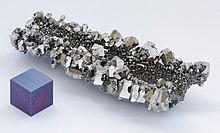



FIELDS is a science instrument on the Parker Solar Probe (PSP), designed to measure magnetic fields in the solar corona during its mission to study the Sun.[1] It is one of four major investigations on board PSP, along with WISPR, ISOIS, and SWEAP.[1] It features three magnetometers.[1] FIELDS is planned to help answer an enduring questions about the Sun, such as why the solar corona is so hot compared to the surface of the Sun and why the solar wind is so fast (a million miles per hour).[2]
The host spacecraft, Parker Solar Probe, was launched by a Delta IV Heavy on August 12, 2018 from Florida, USA.[3] On August 13, 2018 FIELDS became the first instrument to be activated including beginning deployment of the four whip antennas (clamps unlocked) and extension of the magnetometer boom.[4] On September 4, 2018 the whip antennas were deployed.[5]
- ^ a b c Cite error: The named reference
ssrwas invoked but never defined (see the help page). - ^ "Here comes the sun: New spacecraft to fly closer than ever before". CU Boulder Today. 2018-08-08. Retrieved 2018-08-18.
- ^ Brown, Geoffrey; Brown, Dwayne; Fox, Karen (August 12, 2018). "Parker Solar Probe Launches on Historic Journey to Touch the Sun". Parker Solar Probe. Retrieved August 13, 2018.
- ^ Cite error: The named reference
:0was invoked but never defined (see the help page). - ^ "NASA's Parker Solar Probe brings instruments and secondary systems online ahead of schedule | V3". V3. Retrieved 2018-09-12.